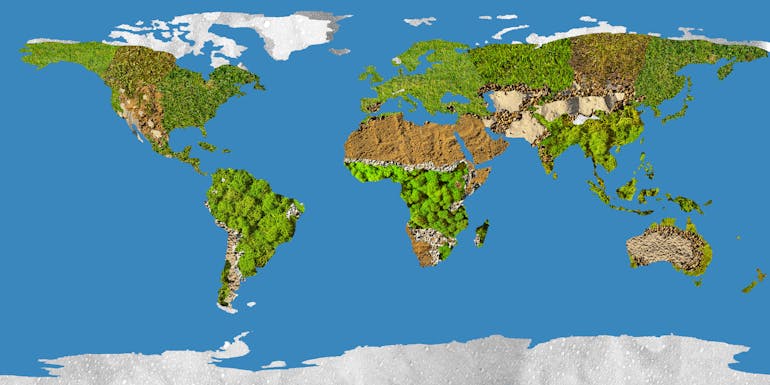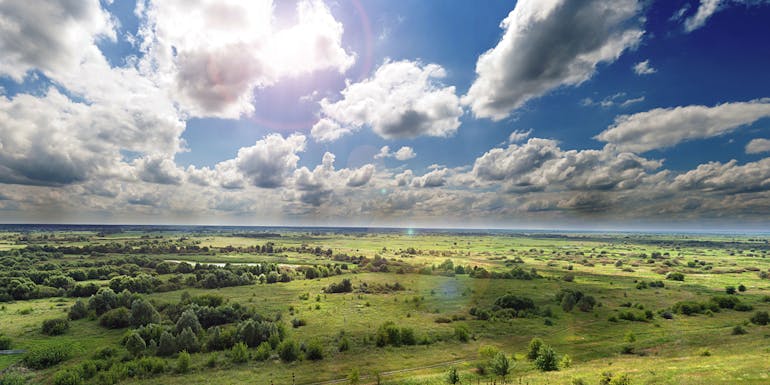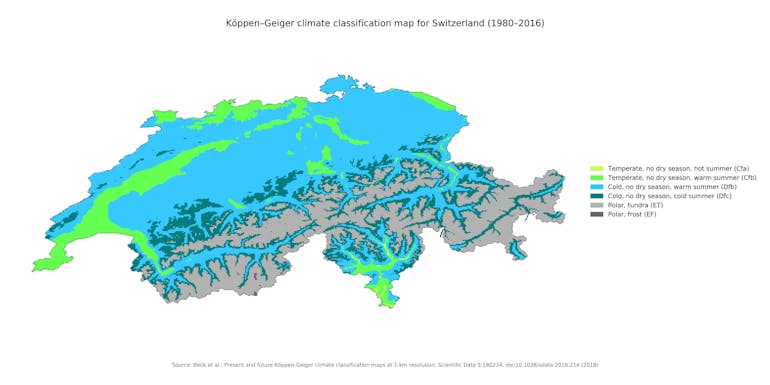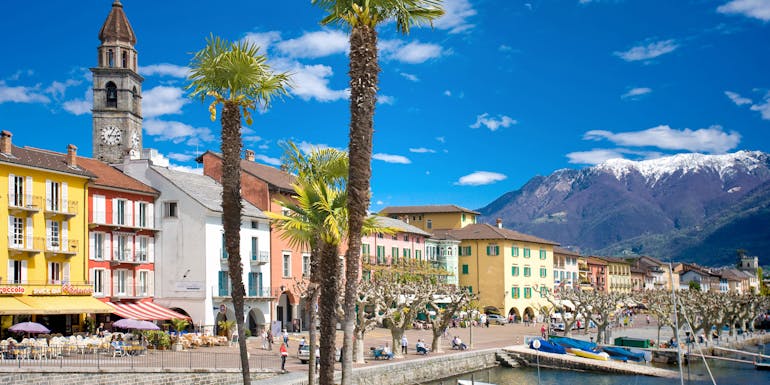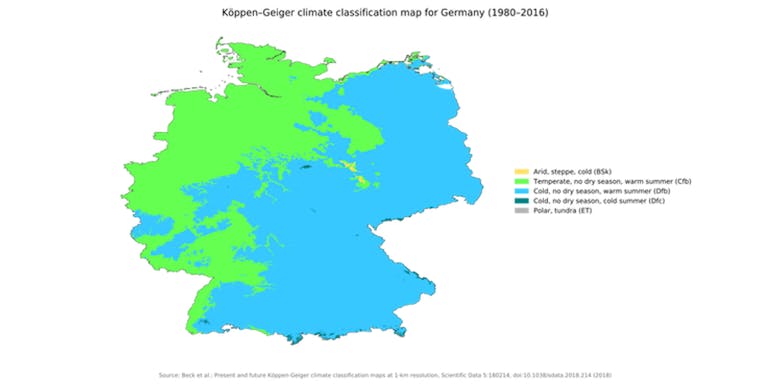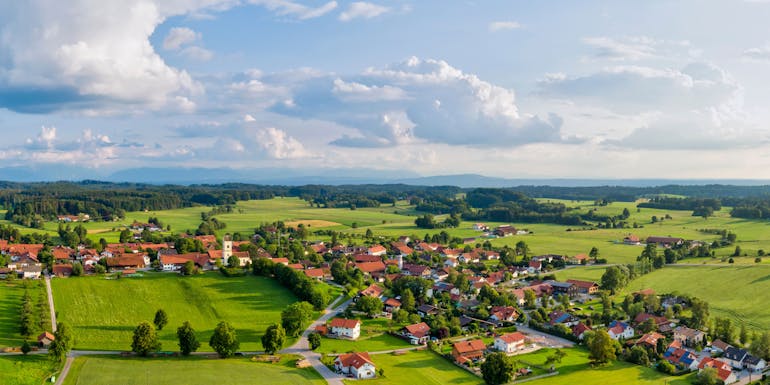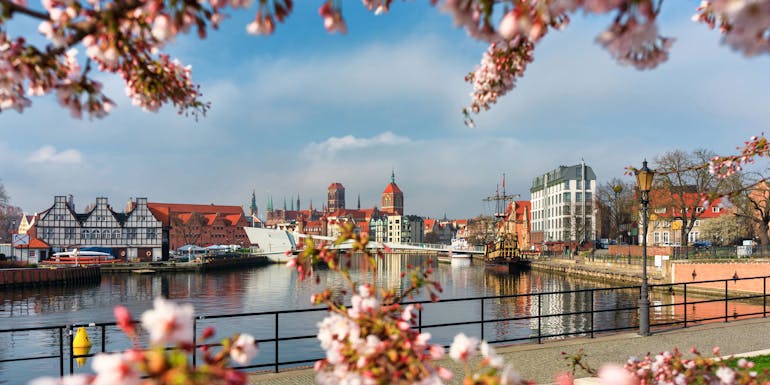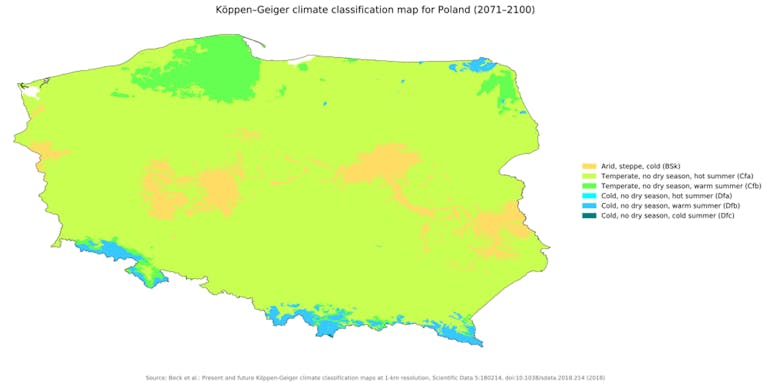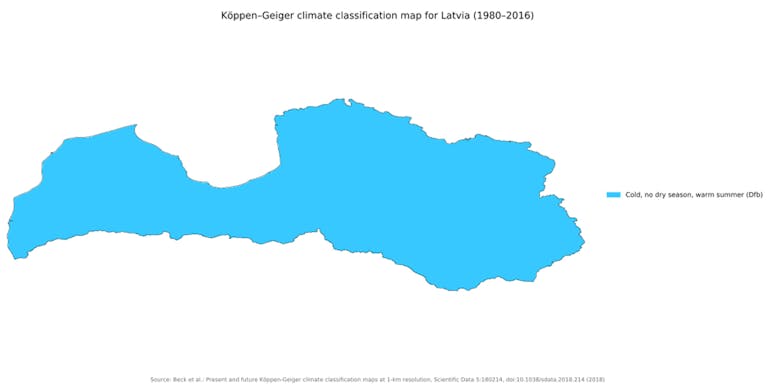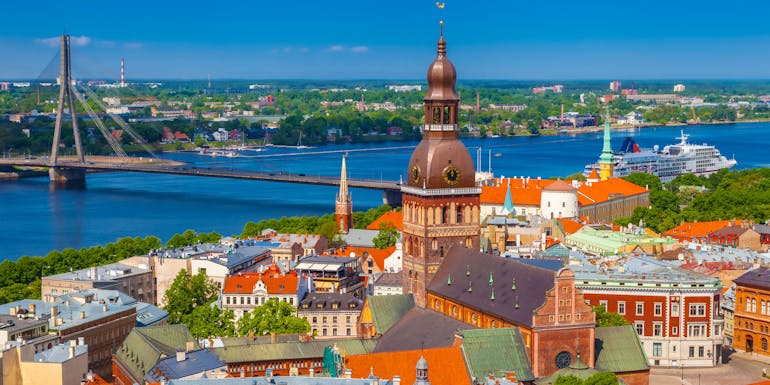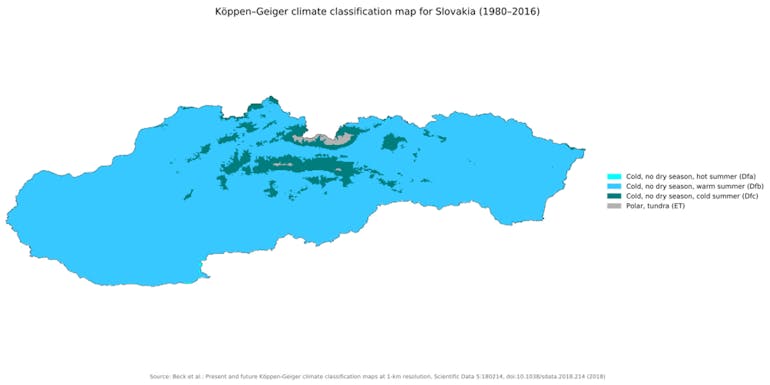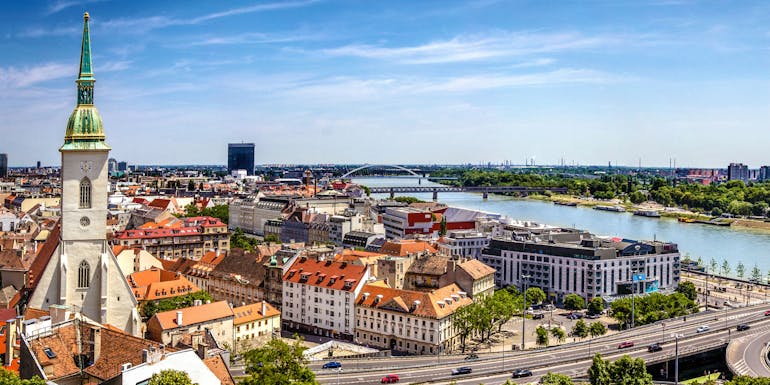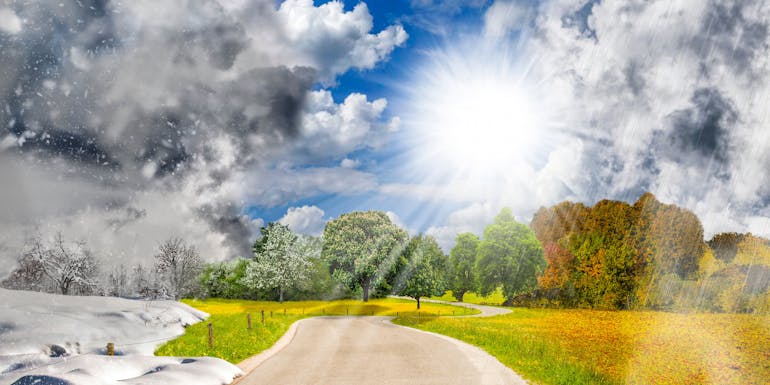
Nadine Walder, 24 April 2023
Public space
Global climate conditions: the temperate zone and the indoor climate
To put it very simply, in climate terms the world is divided into five large climate zones. The climate conditions in these zones have a decisive effect on the climate indoors and these different conditions must be taken into consideration when constructing buildings. Construction must be geared to the outdoor climate to ensure a pleasant indoor climate. Depending on the region in which you live, various indoor climate appliances can be used in addition to the construction method.
For more than 20 years Stadler Form has cooperated with various distributors around the world to offer appliances to improve the indoor climate. We are using these superb partnerships as an opportunity to present you with a new series of blogs about climate conditions worldwide. In conjunction with our distributors, over five articles I will give you an insight into different climate regions, introduce you to specific countries and their climate peculiarities and show how different climate regions can affect the indoor climate. You will also learn how climatic, social or political changes affect people’s behaviour with regard to the indoor climate, for example.
This article includes the following topics
- Climate zones and climate types: different classifications
- The temperate zone: west winds all the year and distinct seasons
- Switzerland's climate: diversity produced by mountains and lakes
- Effects of the Swiss climate on the indoor climate in one's own household
- The German climate: between moderately warm and continental
- Trend towards higher temperatures and effects of the German climate on indoor climate
- Poland's climate: specific influences as a resuld of climate change
- Climate changes in Poland and their effects on the indoor climate
- Latvia's climate: a continental climate
- Effects of Latvian climate on indoor humidity and temperature
- The climate in Slovakia: diverse climates as a result of moutain ranges
- Effects of high air pollution on the indoor climate
- The temperate zone's effect on the indoor climate
Climate zones and climate types: different classifications
Put simply, the world is divided into five thermal climate zones based on the annual average temperature: tropical, arid, temperate zone, continental zone and polar zone. The climate zones run around the world parallel to the lines of latitude, in an east-west direction. This is a highly simplified representation. It is not just the climate zone that determines precisely the type of climate that predominates in a specific region. Additional climate types and sub-types are required for this. Different climate classifications have developed over the years – there are genetic, empirical and integrative classification systems.
Genetic climate classifications
Large-scale climate factors such as air masses, winds and sunlight are used for genetic climate classifications. Regional climate types are therefore derived from global climate factors. This classification is based on the climate’s origin. The climate in a specific location is derived qualitatively from its position in global circulation. Exponents of this classification include Hermann Flohn and Ernst Neef.
Empirical climate classifications
Empirical climate classifications, unlike genetic classifications, use quantitative decision-making parameters. This classification focuses on the climate’s effect. Climate systems are divided according to their effects on ecosystems and agriculture. Data determined locally from various quantifiable climate features, such as precipitation and air temperatures, is used for this. Known proponents of this classification include Vladimir Peter Köppen and Rudolf Geiger, as well as Carl Troll and Karlheinz Paffen.
Integrative climate classifications
Finally, integrative climate classifications combine features from the two other classifications, taking account of both the origins and effect of climate. Integrative classification is the most modern method. The best-known model originated with Wilhelm Lauer, Daud Rafiqpoor and Peter Frankenberg.
As you can already see just from this brief overview, allocating regions to specific climate types is a complex undertaking. In this and subsequent articles, I will therefore restrict myself initially to describing the big, simplified climate zones and, when introducing the individual countries, also give the classification according to Köppen and Geiger*. This has prevailed internationally and has remained clear, with 30 climate subtypes. The classification is based on the threshold for the measured climate features and on vegetation and hydrological balance features. A combination of two or three letters results in a climate formula. The combination of letters produces the 30 climate subtypes.
* The division in this article is based on the new global maps according to Beck et al. (2018), who use a measuring period of 1980-2016 for the maps. The division is somewhat different to Köppen and Geiger’s original classification due to global warming.
The temperate zone: west winds all the year and distinct seasons
The temperate climate zone is located between the continental and arid climate zones, between the 40th and 60th parallels, either side of the equator. More than one third of the world’s total population lives here. The temperate zone exhibits moderate temperatures and precipitation. It is typified by the west winds which blow all year and the four distinct seasons. This means that throughout the year the wind blows from west to east and temperatures vary depending on the time of year. In this case we also talk about a seasonal climate. Summers are usually warm to hot, whilst winters are cool. The average temperature is around 10 °C.
In the temperate zone there are no clear rainy or dry seasons, precipitation is spread across the year. Precipitation volumes do vary by region though. In some areas there is a great deal of precipitation, whilst others are relatively dry. Precipitation falls in the form of rain in the summer and frequently as snow in the winter.
The temperate zone is also subdivided into a warm temperate and cold temperate sub-zone due to the different climate conditions and a distinction is made between a maritime and continental climate. The climate classification according to Köppen and Geiger, what are known as C and D climates, fall into the temperate zone described here. C climates designate temperate warm climates and D climates a boreal, or snow and forest climate. E climates can also occur in the temperate zone where there are mountains, and this includes the snow climate.
Following this detailed description of climate zones, types and the temperate zone, I would now like to introduce five countries to you in greater detail. Stadler Form is a Swiss company, which is why it is appropriate to start with our native country.
Switzerland's climate: diversity produced by mountains and lakes
Attribution: Beck, H.E., Zimmermann, N. E., McVicar, T. R., Vergopolan, N., Berg, A., & Wood, E. F., CC BY 4.0, via Wikimedia CommonsSwitzerland exhibits many different climates due to its location. The country is characterised by many mountain ranges and lakes, which contribute to its diverse climate. According to Köppen & Geiger’s climate classification, Switzerland is divided into three climates: the central midlands, central and south Ticino come under C climates, the Jura mountains and the high Alpine valleys comprise the D climates and the high Alps are part of the E climates. Most areas come under the oceanic, or humid temperate sub-climate with warm summers (Cfb) and the continental, warm humid summer sub-climate (Dfb).
The Swiss plains have four distinct seasons and precipitation falls throughout the year. There can be considerable temperature differences between the north and south of the country. Because the Alpine chain largely holds back cold air masses from the north, the climate in the south (Ticino) is much milder than in the north of Switzerland. Ticino therefore has the reputation of being Switzerland’s sun trap.
Effects of the Swiss climate on the indoor climate in one's own household
The climate with the four distinct seasons in Switzerland’s plains also affects the indoor climate. In winter, when it’s cold outside and homes are heated, air in indoor rooms is dry. Many Swiss homes rely on humidifiers at this time of year.
As it gets warmer in spring there is more pollen, amongst other things, in the air. Many people, especially those who suffer from allergies, rely on air purifiers or air washers at this time of year to create a pleasant climate in their homes.
With temperatures ranging from 18 °C to 28 °C (and sometimes over 30 ° C), Swiss summers can be warm to hot. More of life is then lived outdoors, but if you want to be comfortable in the office or at home you will want a cool breeze and use a fan. Some buildings also have air conditioning equipment built in. Humidity in indoor rooms also rises as the temperature rises, which is why more and more Swiss households are using dehumidifiers in summer.
In autumn the weather in Switzerland turns cooler again and in the transitional period, when buildings and houses are not yet heated, temperatures can fall in indoor rooms too. For people who like to be cosy and warm, use of a fan heater is recommended during this transitional period. And humidifiers are used more often in autumn too, as humidity declines again in indoor rooms as the temperature falls.
The German climate: between moderately warm and continental
Attribution: Beck, H.E., Zimmermann, N. E., McVicar, T. R., Vergopolan, N., Berg, A., & Wood, E. F., CC BY 4.0, via Wikimedia Commons
Just like Switzerland, Germany is also divided into different climate types. Large areas of the country are classed as C and D climates. Small areas in the south of Germany – e.g. the Zugspitze, Germany’s highest mountain – come under E climates. The coastal regions in the north and west of the country are included in the humid temperate sub-climate with warm summers (Cfb). Here the winters tend to be mild and the summers warm.
To the east and south-east the ocean’s influence is significantly reduced and the influence is more continental. These parts of Germany can be classed under the continental, warm humid summer sub-climate (Dfb). Winters here can be cold and summers very hot. The centre of the country is in transition between the oceanic and continental climates.
Trend towards higher temperatures and effects of the German climate on indoor climate
Overall, Germany’s climate is temperate and does not generally exhibit extended periods of very cold or very hot weather. As a consequence of global warming, for some decades Germany, like the rest of the world, has been experiencing a trend towards higher temperatures. Winters, for example, are still very humid with lots or rain, but less cold than in previous years. This means that humidity indoors can still rise, even at this time of year, necessitating the use of dehumidifiers.
The four distinct seasons also influence the indoor climate in Germany and people’s behaviour in this regard. Use of humidifiers in winter is popular in cold regions, and fans are popular for use when it is hot in summer. The German population’s behaviour regarding the indoor climate is not only influenced by changes of season, but social and political changes too. I would like to highlight two examples. Firstly, the digital transformation has made smart indoor climate solutions a must-have, secondly, rising energy costs, caused by the war in Ukraine, have caused fan heaters to become popular in order to save heating costs.
Poland's climate: specific influences as a result of climate change
Poland, like Germany, is in a temperate transitional climate. The climate in the western regions and the north of the country is oceanic with Atlantic influences. A humid temperate sub-climate prevails here (Cfb). Summers are humid and moderately hot, whilst winters are not too cold. The eastern and north-eastern regions are much more continental in nature. Here the summers are drier and hotter and winters colder and snowier. These regions can be classed under the continental, warm humid summer sub-climate (Dfb). There can be major temperature difference of up to 10 °C between the north-east and south-west.
In Poland the four distinct seasons also affect the indoor climate. In regions where the winters are still cold and snowy, the air indoors becomes dry. Use of humidifiers at this time of year is a popular way to improve the indoor climate. And fans are used on hot summer days to produce a cooling breeze in the office or home.
Climate changes in Poland and their effects on the indoor climate
Attribution: Beck, H.E., Zimmermann, N. E., McVicar, T. R., Vergopolan, N., Berg, A., & Wood, E. F., CC BY 4.0, via Wikimedia Commons In the last 20 to 30 years the climate has changed greatly in Poland too. Global warming has caused more and more parts of the country to be classed as Cfb climate and fewer and fewer as Dfb. Winters are becoming warmer and less snowy. At the same time, the summers are increasingly unpredictable. In the past July and August were the hottest months, now, increasingly, it is June. Generally speaking, Poland is experiencing very strong climate warming and therefore less predictable weather. Also, the country has experienced ever more extreme weather events in recent years. All these factors affect the indoor climate. Milder winters cause increased humidity in interior rooms, which is why use of dehumidifiers in winter is increasing.
Another factor influencing Poland’s indoor climate is the high level of air pollution. The country has one of the highest levels of air pollution in Europe, connected with industry and coal mining. Poland is only very slowly adapting to European Union standards. Also there is a very powerful lobby associated with the mining industry, whilst Poland simultaneously has problems developing green energy sources. Due to the high level of air pollution, it is recommended that air purifiers are used in Poland throughout the year.
Latvia's climate: a continental climate
Attribution: Beck, H.E., Zimmermann, N. E., McVicar, T. R., Vergopolan, N., Berg, A., & Wood, E. F., CC BY 4.0, via Wikimedia Commons Latvia predominantly has a cool temperate climate. According to Köppen and Geiger’s climate classification, Latvia falls into the D climates, with the Dfb sub-climate type. Like the countries we have already considered, Latvia is also characterised by four seasons. In order to introduce a little variety, I would like to present Latvia’s climate to you differently, using precipitation and winds.
Amounts of precipitation vary by region and season. Very cloudy weather can be observed in the autumn and winter months. At these times of year there is most frequently moderately intense precipitation. The least precipitation falls in spring, whilst summer, during which short, heavy bursts of rainfall locally are characteristic, is the season with the least precipitation. Periods of drought differ locally. They are shorter in the east of the country. More precipitation falls here, particularly in summer, than in the west of the country.
The average wind speed in Latvia is 2.6 – 4.8 m/s. The weakest winds are in the summer months, when the average speed is 3.0 m/s. As a result of the south-west winds from the Baltic Sea the climate in the coastal regions is very wet. In autumn, the average wind speed may increase to 3.8 m/s and in winter to 4.0 m/s. In general, the biggest variation in wind speed is seen in the cold half of the year, from September to March, whilst wind speed values vary a little less during the period from April to August.
Effects of Latvian climate on indoor humidity and temperature
Quantities of precipitation and winds also affect the indoor climate. In autumn, when it rains a lot, humidity indoors increases and it can be sensible to use dehumidifiers. Indoor rooms warm up during the warmer season, from May to August. If you want a cool breeze, then you need a fan. It can be very cold in Latvia during the winter months, making the use of humidifiers and fan heaters popular.
The climate in Slovakia: diverse climates as a result of mountain ranges
Attribution: Beck, H.E., Zimmermann, N. E., McVicar, T. R., Vergopolan, N., Berg, A., & Wood, E. F., CC BY 4.0, via Wikimedia CommonsLast but not least I would like to present to you climate conditions in Slovakia. Just like the countries already mentioned, Slovakia has four definite seasons and precipitation falls throughout the year. According to Köppen and Geiger’s classification, the country comes under the D climates and a very small part under E climates. Slovakia’s numerous mountain ranges clearly influence climate conditions. The High Tatra, with peaks up to 2,700 metres, has a highland climate. Here the winters are cold to very cold and the summers cool. Somewhat deeper, in the mountain regions, the climate is sub-Arctic, with cool summers and cold winters (Dfc). The majority of the country, like the capital Bratislava, has a humid continental cool summer climate (Dfb). In the lower places in the south of the country there are small areas that are to be allocated to the hot summer humid continental climate (Dfa).
Effects of high air pollution on the indoor climate
Like Poland, Slovakia is also struggling with a high level of air pollution. According to a 2021 report by the Slovakian Ministry of the Environment, Slovakia has the third-worst indicator of EU countries. In Slovakia, the population’s pollution from particulates far exceeds the EU average. Like in Poland, use all year round of an air purifier is recommended here. Another factor that has a negative influence on the indoor climate is the high humidity in summer, which leads to damp, mouldy walls. A dehumidifier is the appliance of choice to use in this case. During the cold season when the indoor temperature and humidity drop, a humidifier and fan heater can be used to improve the indoor climate.
The temperate zone's effect on the indoor climate
Introducing the five countries has shown that the four distinct seasons typical of the temperate zone have a clear influence on indoor climate, which changes with the seasons. In winter, the countries are cool to cold, and the air indoors is dry. Pollen increases in the spring and allergy sufferers especially experience a deterioration in the indoor climate. Summer in the temperate zone is warm to hot. Rooms warm up and humidity increases until finally, in autumn, the temperature and therefore humidity indoors decline again.
Global warming, though, is leading to a shift in climate zones towards the C climates and away from the D climates. This also affects the indoor climate, which, amongst other things, is reflected in increased humidity indoors in winter too. Overall, it is necessary to pay attention to global warming where the indoor climate is concerned too.
In the next part in this series we will introduce the subtropical and tropical climates and present to you the climate conditions in China and Hong Kong, amongst others. Something to look forward to!
This article was produced in collaboration with the following Stadler Form distributors:
- Deutschland: Klein AG
- Polen: DLF Sp. z.o.o.
- Lettland: SIA Koroso
- Slowakei: PLAY Electronics, s.r.o.
If you have questions related to indoor room climate, please get in touch with us. Or subscribe to our newsletter to regularly get informed about current topics regarding indoor climate, experience reports or Stadler Form insights.

